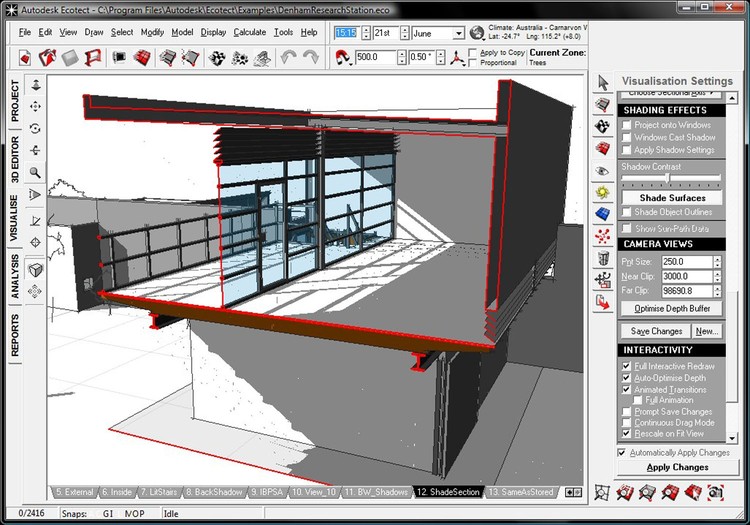


This is the area that needs to be addressed first, and it’s usually where the whole process falls over.
#Ecotect acoustics software#
If you are learning to use the software whilst trying to create your model, it will take a great deal longer.

Even an experienced user will have to think carefully and plan the model around the different requirements of each analysis process – a first-time student has no hope.įrom my own experience in running workshops and helping kick-start courses, the most difficult and time-consuming step in using any simulation software is the generation of the model. No point simulating rooms that may not even end up in the final design, so they will likely wait until their designs resolve before starting anyway.Įven if the students are well grounded in the fundamentals of lighting, acoustics and heat flow, just the nomenclature and approach used in the software can take time getting used to. If using their current designs, they may be still quite fluid and unresolved. Better to wait until a few others gain some experience and benefit from that. Students are usually quite bright, know the system and are unlikely to start working on an unfamiliar tool very early – it will take time and they know they could be more productive doing other things that they can do first. Thus the nature and time provision of the project is also a significant factor.Ī project in which students have to learn the software, model parts of their current design project and do thermal, acoustic and lighting studies – all in six weeks – will more than likely result in a great deal of frustration and very little work of any value. However no amount of on-line help is sufficient if no-one ever reads it – and no-one has time to read when their project is due at 9:00am the next morning. This can lead to disproportionate amounts of time spent on the mechanics of the process and not the contents of the course, resulting in a bad experience all round.įundamentally the software developer is a major part of the solution – adequate tutorials, help files and background material can make the lecturer’s job much easier. The main problem is invariably the amount of time required for students to gain sufficient proficiency to actually make use of the analysis results – too often they struggle to get any results at all, let alone valid comparative ones. The decision to introduce analysis software in any course is always a tough one. However, even if used solely by the lecturer, its potential for the interactive demonstration of quite complex concepts should not be overlooked. This article has permanently moved here from the Natural Frequency Journal, though you can still view aĪs a hands-on experience for students, ECOTECT can be either a pleasure or a nightmare, depending on the project requirements and their level of proficiency.


 0 kommentar(er)
0 kommentar(er)
